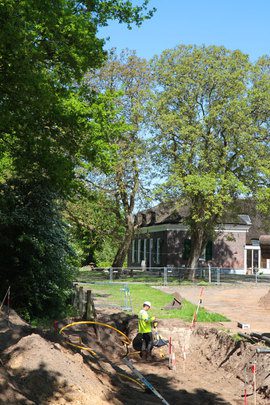So at those particular places where the coating is worn so badly that the pipeline makes contact with the soil, the primary protection system has failed and the CP will take over. Of course this situation is not desirable, the primary system should stay intact. However, below-ground monitoring is a complicated task.
DCVG-measurements (Direct Current Voltage Gradients)
DCVG allows us to detect damages to the coating above ground at 30 cm exact. It also allows us to determine what the extend of the damage is. DCGV technique is mostly used for:
- Delivering new pipe parts(commissioning)
- Detecting large damages to the coating to lower the cathodic protections (CP) protective current.
- Create insight in the general state of the coating.
- Check-up measurements after (illegal) excavations.
- Warranty checks (for instance 1 year after the delivery) depending on the contract.

CIP-measurements (Close Interval Potential)
Besides a DCVG survey we can use u CIP-measurement to determine the potential differences in the ground. When the coating is damaged a reduced potential difference might appear (very) locally between the pipe and the soil because there is contact between the potentials. This causes the pipe to form a potential funnel in the ground, which can be measured above ground using a CIP-survey.
The potential difference in the ground is measured relative to the undisturbed soil. Because it is unknown beforehand where and mainly how much the coating is damaged, surveys are done every 50 – 100 cm. This depends on the age and type of coating of the pipe.
Added benefit to doing a CIP-survey is that disruptions by third-party conductors in the soil are picked up. If for instance there is an above-ground connection with the earthing system, the earthing will form a large funnel in the ground.


